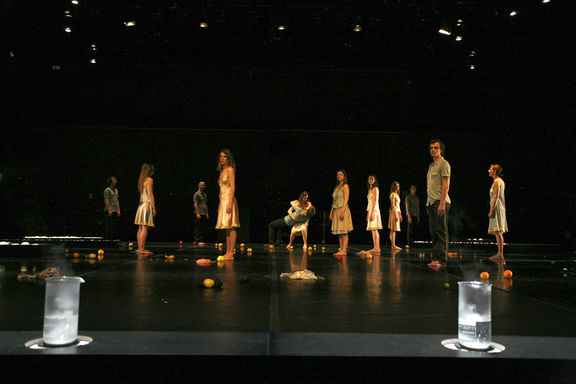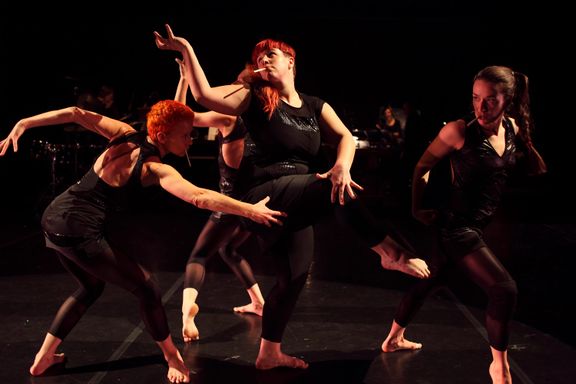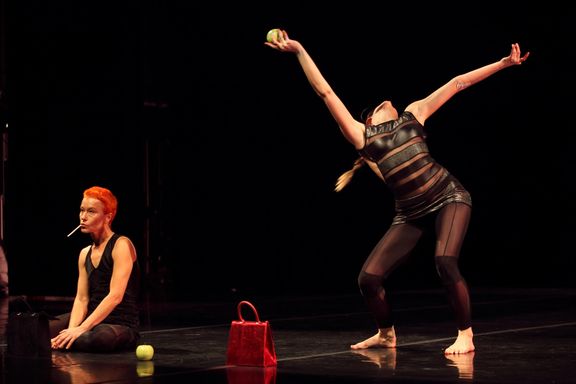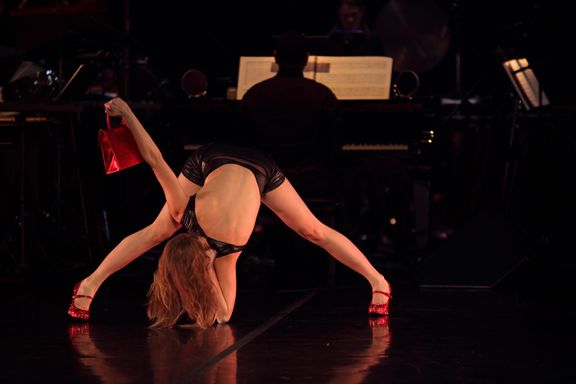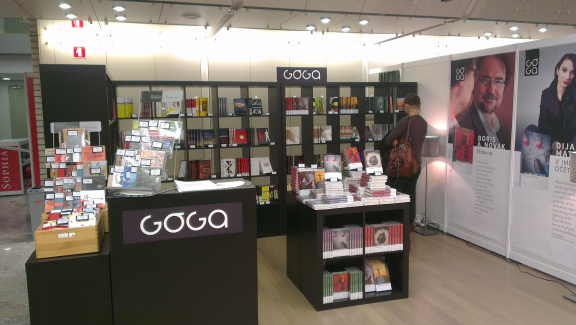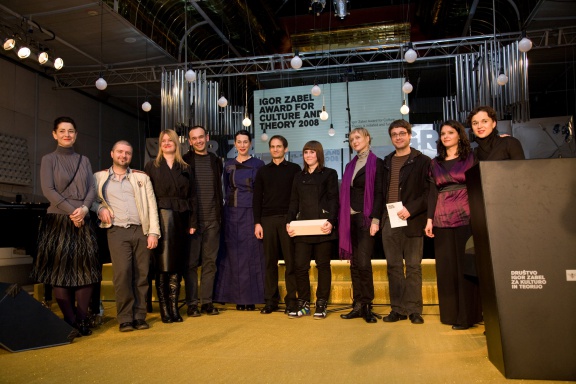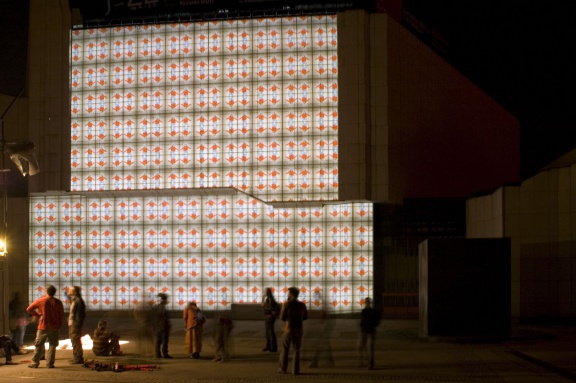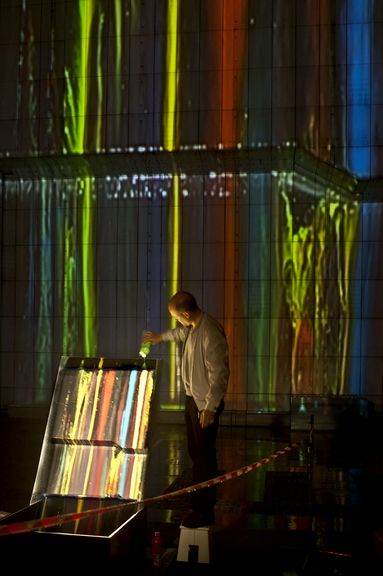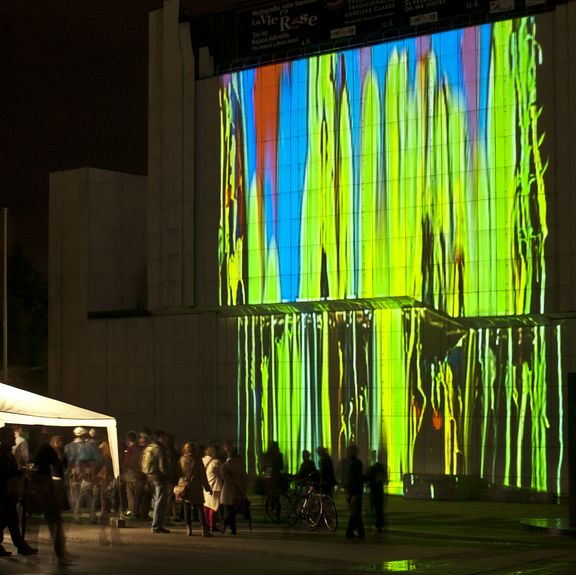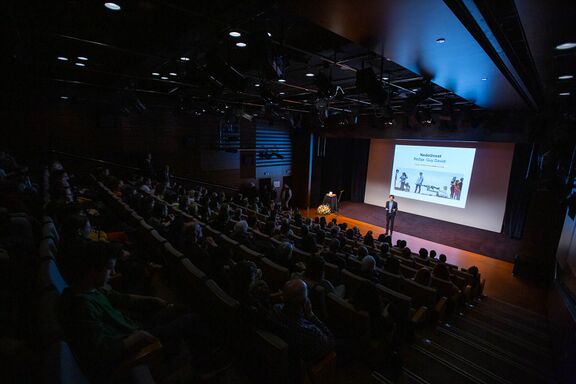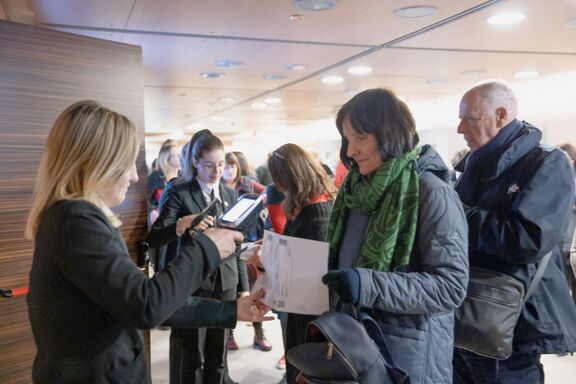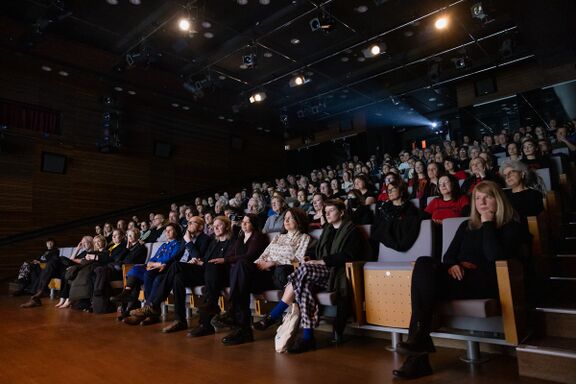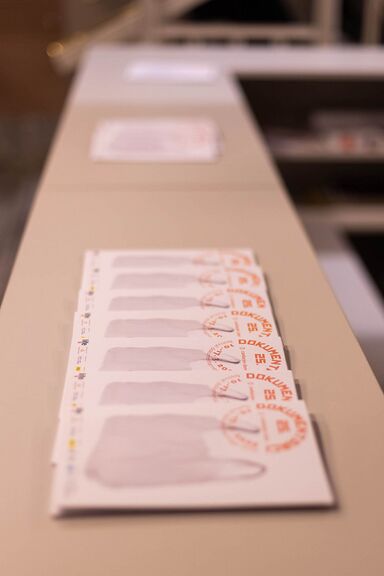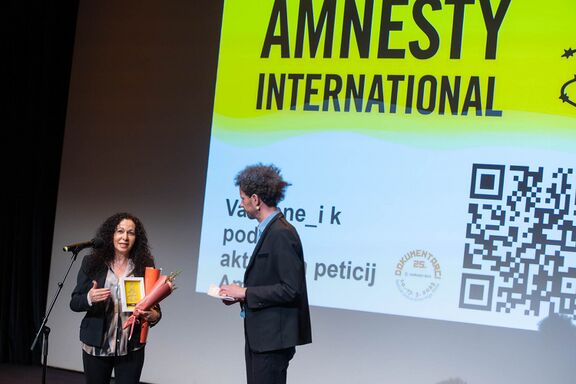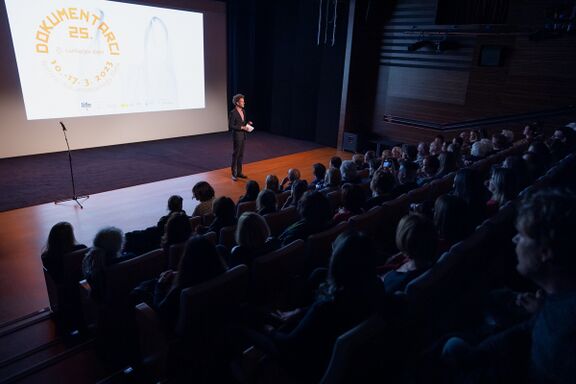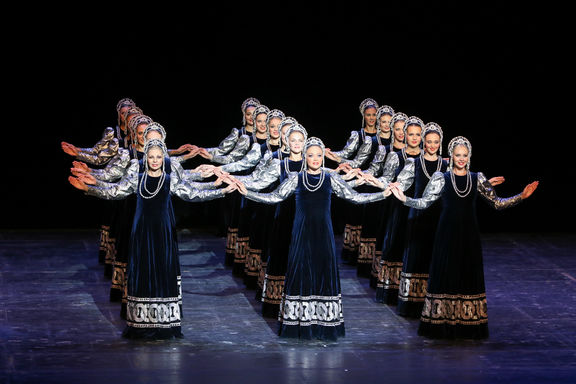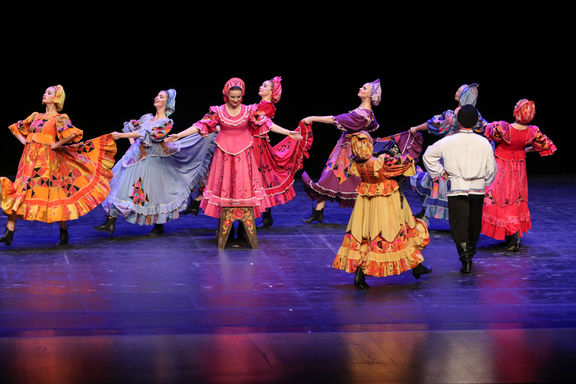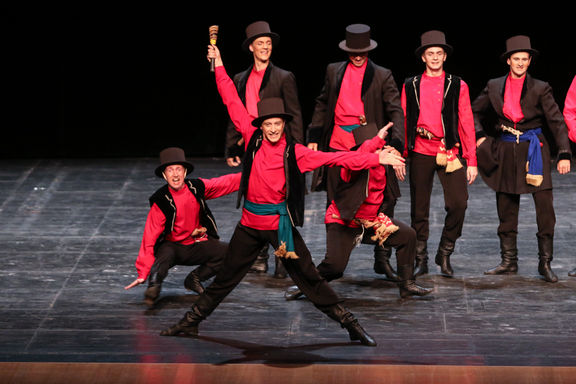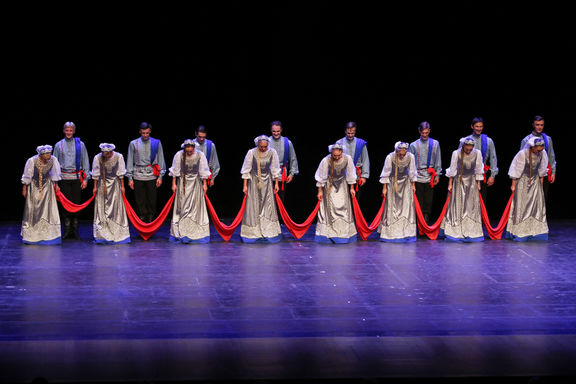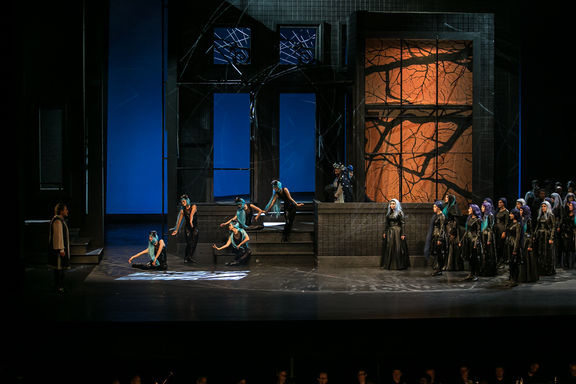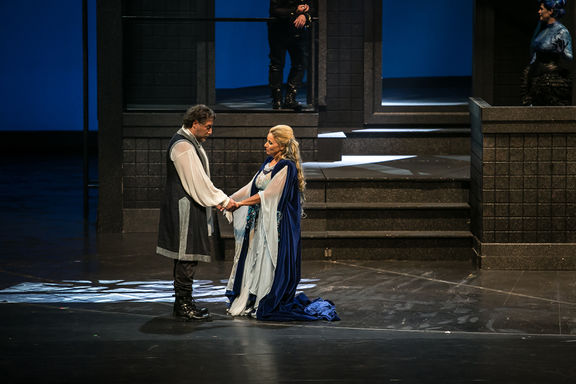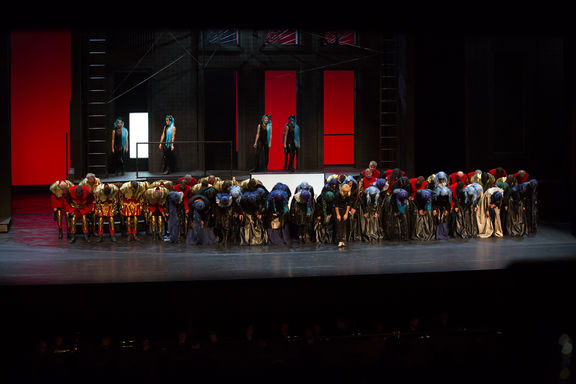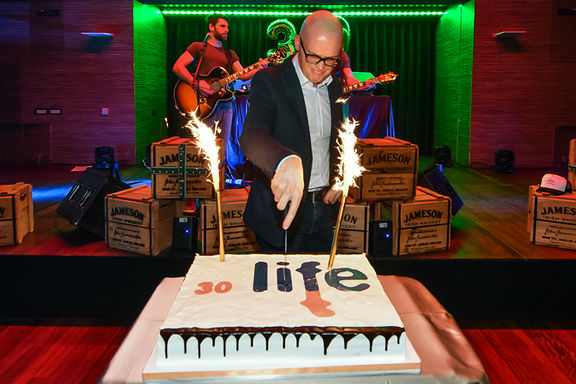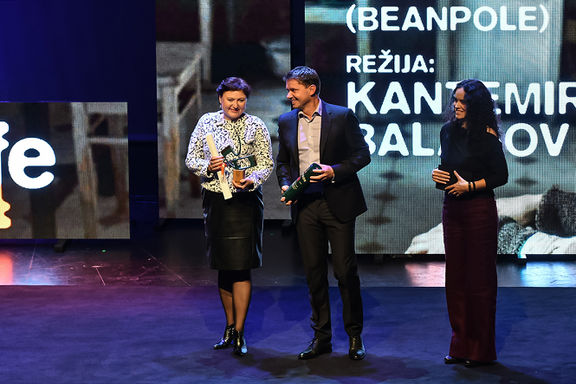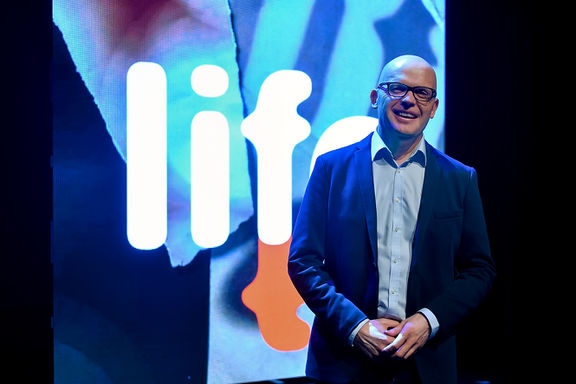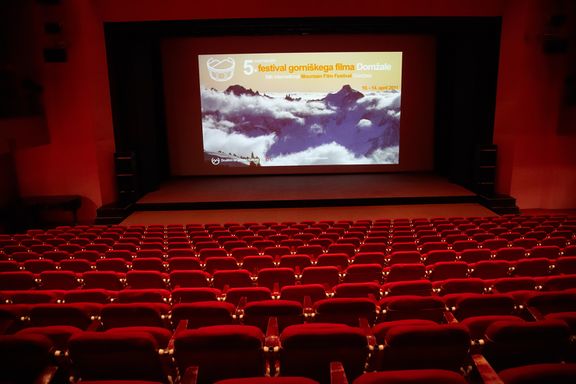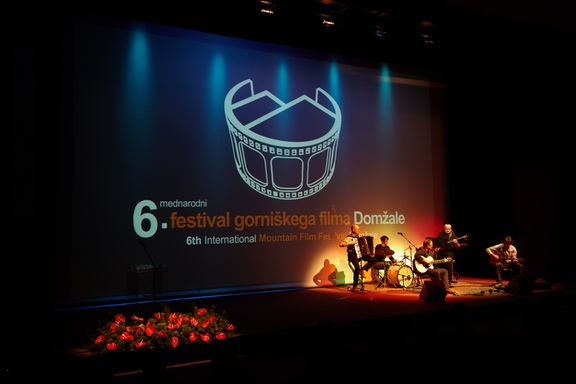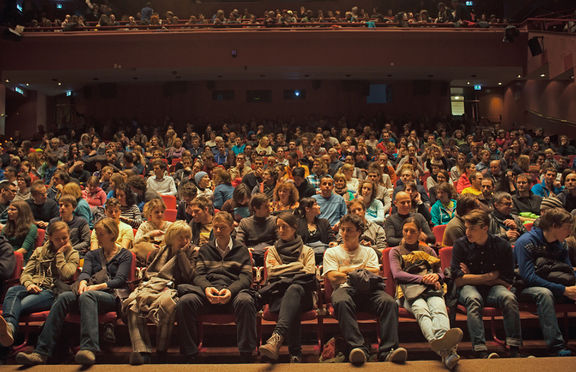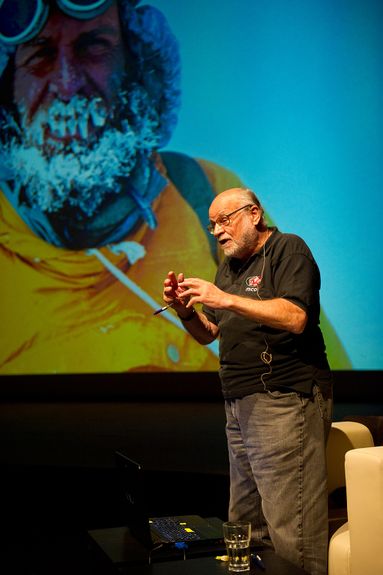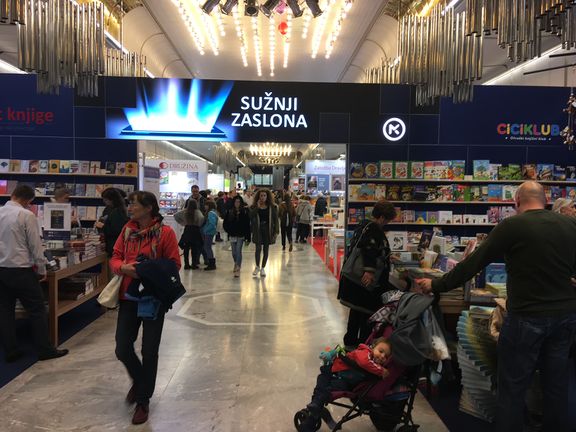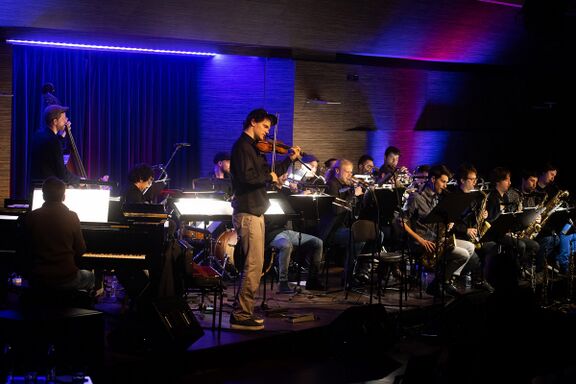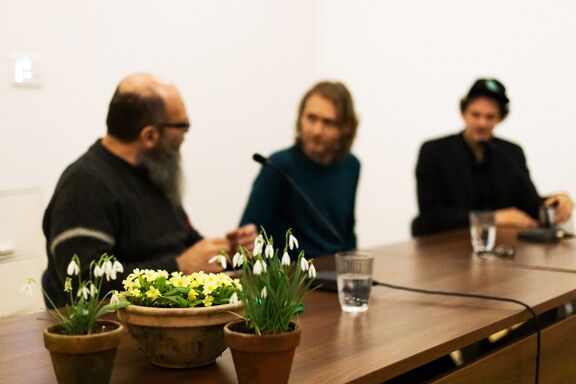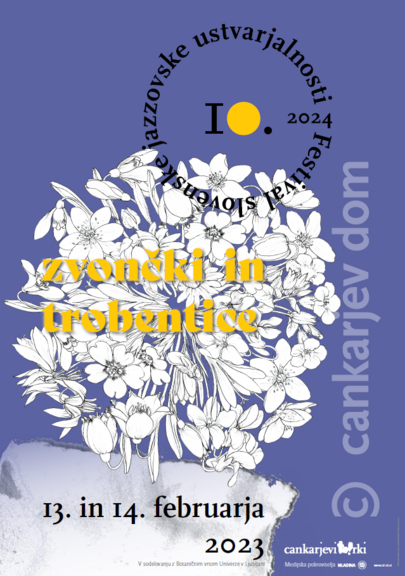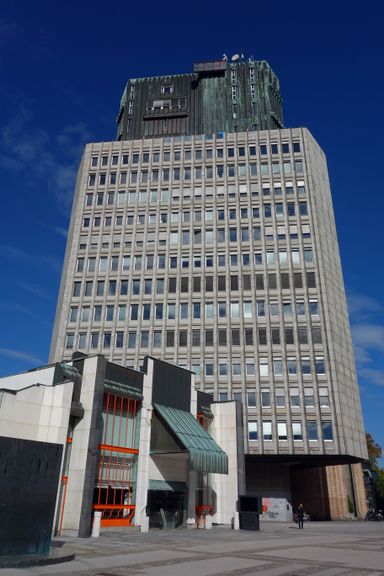Cankarjev dom, Cultural and Congress Centre

Past events
-
8 Dec 2024
AustriaKlagenfurt/CelovecStadttheater KlagenfurtThe theatre play Under the Free Sun, based on Fran Saleški Finžgar’s canonical novel, directed by Goran Vojnović. The play is produced by Slovene National Theatre Nova Gorica and coproduced by Slovene National Theatre Maribor, Cankarjev dom Ljubljana, and Zavod Škrateljc.
-
to
15 Nov 2024
16 Nov 2024
LuxembourgLuxembourgThéâtre National du LuxembourgTwo performances of "Saint Joan of the Stockyards - Sveta Ivana Klavniška" by Bertold Brecht, with original live music by Laibach, produced by Emilia Romagna Teatro ERT, Mladinsko Theatre, in collaboration with Cankarjev dom, Cultural and Congress Centre, Théâtre National du Luxembourg, andErosAntEros – POLIS Teatro Festival, Teatro Stabile di Bolzano.
-
28 Aug 2024
CroatiaKorčulaLjetno Kino Korcula"Beograjski Trio - Belgrade trio", a theatre play adapted after Goran Marković's eponymous novel. Directed by Matjaž Berger and produced by Anton Podbevšek Theatre in cooperation with Cankarjev dom, Cultural and Congress Centre.
-
24 Apr 2024
ItalyRavennaTeatro AlighieriA performance of "Saint Joan of the Stockyards - Sveta Ivana Klavniška", a Slovene production of Bertold Brecht's play by Mladinsko Theatre in collaboration with Cankarjev dom. Featuring music by Laibach and cast members from Slovenia, Italy, and Luxembourg. Coproduced by Emilia Romagna Teatro Bologna/Teatro Nazionale, TNL – Théâtre National du Luxembourg, ErosAntEros – POLIS Teatro Festival, and Teatro Stabile di Bolzano.
-
to
18 Apr 2024
21 Apr 2024
ItalyBolognaArena del Sole ERTFour performances of "Saint Joan of the Stockyards - Sveta Ivana Klavniška", a Slovene production of Bertold Brecht's play by Mladinsko Theatre in collaboration with Cankarjev dom. Featuring music by Laibach and cast members from Slovenia, Italy, and Luxembourg. Coproduced by Emilia Romagna Teatro Bologna/Teatro Nazionale, TNL – Théâtre National du Luxembourg, ErosAntEros – POLIS Teatro Festival, and Teatro Stabile di Bolzano. The play premieres on the 18th of April.
-
16 Mar 2024
GermanyLudwigsburgForum am SchlossparkTwo performances of the ballet "Faust", choreographed by Edward Clug and co-produced by the ballet ansamble of Slovene National Theatre Maribor and Cankarjev dom, in collaboration with Opernhaus Zürich.
-
to
25 Jan 2020
26 Jan 2020
ItalyCataniaScenario PublicoThe dance performance Fight Bright by Milan Tomášik, produced by Cortesia Cultural Association and co-produced by Dance Theatre Ljubljana and Cankarjev dom, Cultural and Congress Centre,
-
to
16 Nov 2019
17 Nov 2019
GermanyDresdenFast Forward European Festival of Young DirectorsThe theatre performance The Bailiff Yerney and His Rights, directed by Žiga Divjak and produced by Cankarjev dom, Cultural and Congress Centre and Academy of Theatre, Radio, Film and Television (AGRFT), supported by the Slovenian Cultural Centre in Berlin,
-
27 Oct 2019
PolandKielceTheater Stefan ŻeromskiKielce International Theatre Festival,The performance The Iliad, directed by Jernej Lorenci and produced by the Slovene National Theatre Drama Ljubljana, Ljubljana City Theatre (MGL) and Cankarjev dom, Cultural and Congress Centre,
-
to
24 Jun 2019
27 Jun 2019
CroatiaUmagGolden Lion International Festival of Chamber TheatreTheatre performances Stockholm, Pennsylvania, directed by Nataša Barbara Gračner and produced by Ljubljana City Theatre (MGL); Martin Sherman's Bent, directed by Alen Jelen and produced by the ŠKUC Theatre, Cankarjev dom Culture and Congress Centre and Kolaž Institute; and For the Good of All, directed by Nenni Delmestre and co-produced by Slovene National Theatre Nova Gorica and Koper Theatre,
-
to
15 Jun 2019
16 Jun 2019
BelgiumBrusselsTictac Art CentreThe dance performance Fight Bright by Milan Tomášik, produced by Cortesia Cultural Association and co-produced by Dance Theatre Ljubljana and Cankarjev dom, Cultural and Congress Centre,
-
11 Jun 2019
CroatiaZagrebZagreb Youth TheatreZagreb Dance WeekThe dance performance Fight Bright by Milan Tomášik, produced by Cortesia Cultural Association and co-produced by Dance Theatre Ljubljana and Cankarjev dom, Cultural and Congress Centre,
-
to
25 Oct 2018
27 Oct 2018
Czech RepublicOstrava, PragueCooltour, Studio ALTAHYBAJ HO! FestivalThe dance performance Solo 2016 by Milan Tomášik, produced by Cortesia Cultural Association and co-produced by Dance Theatre Ljubljana and Cankarjev dom, Cultural and Congress Centre,
-
30 Sep 2018
CroatiaMljetMljet National ParkThe performance Janez Vrečko: KONS:O:VEL, directed by Matjaž Berger and produced by Anton Podbevšek Theatre and Studia humanitatis in cooperation with Cankarjev dom, Cultural and Congress Centre,
-
to
25 Sep 2018
2 Oct 2018
AustriaKlagenfurt/CelovecTheaterHALLE11Pelzverkehr Festival of Dance and PerformanceThe performances Staging a Play: the Glass Menagerie, choreographed by Matija Ferlin and produced by Emanat Institute (with artist talk with Matija Ferlin and Maja Delak); Solo for Two Voices by Anja Golob, Magdalena Reiter and Milan Tomášik, produced by Mirabelka Institute and co-produced by Dance Theatre Ljubljana and Cankarjev dom, Cultural and Congress Centre; and performance for children Juri Muri in Africa, directed by Ivana Djilas, choreographed by Maša Kagao Knez and produced by the Dance Theatre Ljubljana, supported by the Slovenian Culture and Information Centre, Vienna (SKICA) (Embassy of the Republic of Slovenia in Vienna),
-
12 Sep 2018
Czech RepublicPlzeňThe New StageInternational Theatre FestivalThe performance The Iliad, directed by Jernej Lorenci and produced by the Slovene National Theatre Drama Ljubljana, Ljubljana City Theatre (MGL) and Cankarjev dom, Cultural and Congress Centre,
-
25 Aug 2018
CroatiaKorčulaSummer CinemaKorčula Summer FestivalThe performance The Triple Life of Antigone, written by Slavoj Žižek and directed by Matjaž Berger, produced by Anton Podbevšek Theatre in cooperation with Cankarjev dom, Cultural and Congress Centre,
-
to
7 Aug 2018
20 Aug 2018
North MacedoniaOhridAntique theatre, Primary school St. Clement of OhridOhrid Summer FestivalThe performance The Little Wire Girl, directed by Marjan Nečak and produced by the Slovene National Theatre Drama Ljubljana, and The Iliad, directed by Jernej Lorenci and produced by the Slovene National Theatre Drama Ljubljana, Ljubljana City Theatre (MGL) and Cankarjev dom, Cultural and Congress Centre, as the closing performance
-
8 Jun 2018
PolandGdanskKlub ZakThe dance performance Solo for Two Voices by Anja Golob, Magdalena Reiter and Milan Tomášik, produced by Mirabelka Institute and co-produced by Dance Theatre Ljubljana and Cankarjev dom, Cultural and Congress Centre
-
28 Apr 2018
HungaryBudapestNational TheatreMadách International Theatre Meeting (MITEM)The Iliad, directed by Jernej Lorenci and produced by the Slovene National Theatre Drama Ljubljana, Ljubljana City Theatre (MGL) and Cankarjev dom, Cultural and Congress Centre,
-
21 Apr 2018
SlovakiaBratislavaNuDanceFestThe dance performance Solo for Two Voices by Anja Golob, Magdalena Reiter and Milan Tomášik, produced by Mirabelka Institute and co-produced by Dance Theatre Ljubljana and Cankarjev dom, Cultural and Congress Centre,
-
to
25 Oct 2017
29 Oct 2017
PolandKatowiceWOMEX, the World Music ExpoA national stand presenting Slovene music, organised by SIGIC, Slovene Music Information Centre, presenting a new compilation CD Tuning into the World: Slovenia, participating also Cankarjev dom, Druga godba Festival, Okarina Festival Bled and Glitterbeat Records
-
6 Oct 2017
BelarusMinskCentral Officers HouseInternational Theatre Forum TEARTThe Iliad, directed by Jernej Lorenci and produced by the Slovene National Theatre Drama Ljubljana, Ljubljana City Theatre (MGL) and Cankarjev dom, Cultural and Congress Centre,
-
18 Jun 2017
RomaniaSibiuTeatrul Naţional Radu StancaSibiu International Theatre FestivalThe Iliad, directed by Jernej Lorenci and produced by the Slovene National Theatre Drama Ljubljana, Ljubljana City Theatre (MGL) and Cankarjev dom, Cultural and Congress Centre,
-
9 May 2017
CroatiaZagrebZagreb Youth TheaterThe Iliad, produced by the Slovene National Theatre Drama Ljubljana, Ljubljana City Theatre (MGL) and Cankarjev dom, Cultural and Congress Centre,
-
to
27 Apr 2017
30 Apr 2017
GermanyBremenjazzahead! Festival and Trade FairA national stand presenting Slovene jazz music, organised by SIGIC, Slovene Music Information Centre, in addition to stands organised by Cankarjev dom, Jazz Cerkno Festival, supported by the Slovenian Cultural Centre in Berlin and the Embassy of the Republic of Slovenia in Berlin
-
to
2 Jul 2016
6 Jul 2016
CroatiaUmagWho's Afraid of Virginia Woolf, produced by the Koper Theatre, No Tears for Queers, produced by ŠKUC Association and Cankarjev dom, Cultural and Congress Centre, Madame Bovary, produced by the Slovene National Theatre Nova Gorica, Plato: The Apology of Socrates, produced by Potodom, and Hero 1.0, produced by Mladinsko Theatre and Moment Arts and Culture Association, at the Golden Lion International Festial of Chamber Theatre
-
17 Jun 2016
AustriaSt. Johann im Rosental/Šentjanž v RožuPfarrsaalMaša Kagao Knez’s Momentum, produced by Cankarjev dom, Cultural and Congress Centre, Dance Theatre Ljubljana, Baobab Association and Studio XXV,
-
8 Jun 2016
BulgariaSofiaAleko Konstantinov State Satirical TheatreThe Iliad, produced by the Slovene National Theatre Drama Ljubljana, Ljubljana City Theatre (MGL) and Cankarjev dom, Cultural and Congress Centre,
-
5 Jun 2016
BulgariaVarnaDrama TheatreThe Iliad, produced by the Slovene National Theatre Drama Ljubljana, Ljubljana City Theatre (MGL) and Cankarjev dom, Cultural and Congress Centre, at the International Theatre Festival Varna Summer
-
26 May 2016
PolandToruńCentrum Kulturalno- Kongresowe JordankiThe Iliad, produced by the Slovene National Theatre Drama Ljubljana, Ljubljana City Theatre (MGL) and Cankarjev dom, Cultural and Congress Centre, at the International Theatre Festival Kontakt
-
27 Jan 2016
USANew YorkHappy Lucky No.1 GalleryIgor Lumpert & Innertextures: Poseidon, a concert with tenor saxophonist Igor Lumpert in the framework of the DogEar series, curated by Bogdan Benigar (Cankarjev dom, Cultural and Congress Centre),
-
20 Jan 2016
USANew YorkHappy Lucky No.1 GalleryJure Pukl's Abstract World, a concert with saxophonist Jure Pukl in the framework of the DogEar series, curated by Bogdan Benigar (Cankarjev dom, Cultural and Congress Centre),
-
6 Jan 2016
USANew YorkHappy Lucky No.1 GalleryDre Hočevar: Collective Effervescence, a concert with drummer Dre Hočevar in the framework of the DogEar series, curated by Bogdan Benigar (Cankarjev dom, Cultural and Congress Centre),
-
22 Oct 2015
ItalyGorizia/GoricaGorizia Cultural CentreUrban Tales, produced by M&N Dance Company, Slovene National Theatre Nova Gorica, Celinka Association and Cankarjev dom, Cultural and Congress Centre, at the 25th Theatre Festival Castello di Gorizia
-
16 Oct 2015
PolandTarnówCentrum Sztuki MościceUrban Tales, produced by M&N Dance Company, Slovene National Theatre Nova Gorica, Celinka Association and Cankarjev dom, Cultural and Congress Centre, at the Scena Otwarta International Dance Theatre Festival
-
to
18 Sep 2015
21 Sep 2015
SerbiaBelgradeBitef Theatre, MadlenianumThe Iliad, produced by the Slovene National Theatre Drama Ljubljana, Ljubljana City Theatre (MGL) and Cankarjev dom, Cultural and Congress Centre, and The Ristić Complex, co-produced by Mladinsko Theatre, at the Belgrade International Theatre Festival BITEF
-
14 Sep 2015
SerbiaLoznicaCentar za kulturo Vuka KaradžićaIvo Svetina’s ABC oder Krieg, produced by the Muzeum Institute and co-produced by the Prešeren Theatre Kranj and Cankarjev dom opens the Vukov sabor 2015
-
to
3 Sep 2015
5 Sep 2015
CroatiaZagrebZagreb Dance Centre Ilica 10The Call of the Woods or Your Mother's Kiss, conceived and choreographed by Vesna Eča Dvornik, produced by Federacija Institute and Cankarjev dom, Cultural and Congress Centre,
-
22 Jun 2015
MontenegroBudvaIvo Svetina’s ABC oder Krieg, produced by the Muzeum Institute and co-produced by the Prešeren Theatre Kranj and Cankarjev dom at the Festival Grada Teatar
-
to
27 Apr 2015
28 Apr 2015
CroatiaSplitCity Puppet Theatre, Croatian National TheatreThe Crazy Locomotive, produced by the Slovene National Theatre Drama Ljubljana, and Europe, co-produced by Imaginarni Institute and Cankarjev dom, Cultural and Congress Centre, at the 25th Marulič Days festival of Croatian drama
-
31 Jan 2015
SerbiaBelgradeOpera&Theatre MadlenianumIvo Svetina’s ABC oder Krieg, produced by the Muzeum Institute and co-produced by the Prešeren Theatre Kranj and Cankarjev dom, supported by the Embassy of the Republic of Slovenia in Belgrade,
-
to
24 Apr 2014
27 Apr 2014
GermanyBremenjazzahead! Festival and Trade FairA national stand presenting Slovene jazz music, organised by SIGIC, Slovene Music Information Centre, in addition to stands organised by Cankarjev dom, Druga godba Ljubljana, and Jazz Cerkno Festival
-
16 Jan 2014
CroatiaPulaDom hrvatskih braniteljaNiccolò Piccinni's opera buffa La Cecchina or The Good-Natured Girl, co-produced by the Slovenian Chamber Music Theatre, Cankarjev dom, Academy of Music, and Slovene National Theatre Opera and Ballet Ljubljana,
-
6 Nov 2013
North MacedoniaSkopjeN.I. Albanian TheatreStanislava Repar's She Two Times produced by the ŠKUC Association and co-produced by Cankarjev dom, B-51 Cultural Society, Apokalipsa Cultural and Artistic Association, and AEON, at the SkupiFestival 2013
-
16 Oct 2013
Czech RepublicOstravaKomorní scéna ArénaStanislava Repar's She Two Times produced by the ŠKUC Association and co-produced by Cankarjev dom, B-51 Cultural Society, Apokalipsa Cultural and Artistic Association, and AEON, at the ProtimluvFest 2013
-
to
10 Oct 2013
12 Oct 2013
SlovakiaBratislavaA4 – Associations for contemporary cultureThe première of Stanislava Repar's She Two Times produced by the ŠKUC Association and co-produced by Cankarjev dom, B-51 Cultural Society, Apokalipsa Cultural and Artistic Association, and AEON, supported by the Embassy of the Republic of Slovenia in Bratislava,
-
to
27 Jun 2013
28 Jun 2013
CroatiaŠibenikInternational Children’s Festival ŠibenikSound theatre A King Listens by Peter Kus, co-produced by Federacija Institute and Cankarjev dom, and the performance The Singing Castle by Peter Kus, produced by Forum Ljubljana, the International Children’s Festival Šibenik
-
23 Aug 2012
MontenegroTivatSummer StageFestival of Mediterranean Theatre PurgatorijeThe Iliad, directed by Jernej Lorenci and produced by the Slovene National Theatre Drama Ljubljana, Ljubljana City Theatre (MGL) and Cankarjev dom, Cultural and Congress Centre,
-
to
7 Aug 2012
9 Aug 2012
North MacedoniaBitolaBitolino International Children Theatre FestivalThumbelina by Hans Christian Andersen, directed by Robert Waltl and co-produced by Mini Theatre, Forum Ljubljana and Cankarjev dom
- 30. Ljubljana International Film Festival (LIFFe), 2019
Project summary - 29. Ljubljana International Film Festival (LIFFe), 2018
Project summary - 28. Ljubljana International Film Festival (LIFFe), 2017
Project summary - Ljubljana International Film Festival (Liffe), 2016
Project summary - 24th LIFFe, 2013
Project summary - 23rd LIFFe, 2012
Project summary - 22nd LIFFe, 2011
Project summary - Distribution - Automatic support scheme CD 2011, 2011
Project summary - 21st LIFFe, 2010
Project summary - Distribution - Automatic support scheme CD 2010, 2010
Project summary - Distribution - Automatic support scheme CD 2009, 2009
Project summary - 20th LIFFe, 2009
Project summary - Distribution - Automatic support scheme CD 2008, 2008
Project summary - Distribution - Lady Chatterley, 2008
Project summary - Commedia. Inferno, Purgatorio, Paradiso theatre performance, 2008
Project summary - Distribution - Persepolis, 2008
Project summary - 19th LIFFe, 2008
Project summary - Distribution - Un conte de noel, 2008
Project summary - Distribucija - 12:08 East of Bucharest, 2007
Project summary - 18th LIFFe, 2007
Project summary Show more
History
The proposal for a national cultural centre was first put forward in 1975 when preparations were being made to mark the centenary of the birth of writer Ivan Cankar (1876–1918), after whom it would be named. Despite considerable bureaucratic and financial obstacles, ground was broken on the project in January 1978, on a site that had formerly been owned by the Ursuline Monastery in Ljubljana and nationalised in 1960. In his design, which was nevertheless striking, Ravnikar was keen to avoid overwhelming the proportions of the rest of the square. This led to a sizeable portion of the auditoriums being placed underground.
CD's first events were held in the spring of 1980 (in Linhart Hall), although it was not until 1982 that the site became fully operational. The famous monument to Cankar by sculptor Slavko Tihec, which stands adjacent to one of the main entrances, was unveiled in 1982.
Over the years, CD has established itself as a major tour stop for world-class ensemble and individual performers in almost all branches of music and the performing arts, with younger experimental artists also gaining an ever-stronger foothold. It has also become a prolific organiser or host, alone and in collaboration, of a wide variety of festivals; these include the Ljubljana International Film Festival (LIFFe), Ljubljana Documentary Film Festival, Ljubljana Jazz Festival, Bi Flamenko International Flamenco Festival, the Biennial of Slovene Book Illustration and the Slovenian Book Fair.
Organisation and funding
CD is constituted as a public institute (javni zavod) providing a public service in the area of arts and culture; as such, its main programme is funded by the state via the Ministry of Culture, as well as, at various times, by the Creative Europe – MEDIA programme, foreign embassies based in Ljubljana, the French Institute in Slovenia and the Goethe-Institut Ljubljana, among others.
The centre is also free to pursue market-funded activities in the form of fairs, conferences, conventions and certain international projects, as long as they accord with its general policies, and to raise funds through ticket sales, merchandise, donations and sponsorship. In 2018 these non-budget funds accounted for just under 47% of total income.
CD is led by a director-general, of which there have been only three since 1980: Miran Kert (1980–1982), Mitja Rotovnik (1982–2014) and Uršula Cetinski (2014–). Programming takes place across six departments, each with its own director: classical music, opera and ballet (Ingrid Gortan), theatre and contemporary dance (Andrej Jaklič), jazz and world music (Bogdan Benigar), exhibitions (Nina Pirnat-Spahić), film (Simon Popek) and cultural education/humanities (Barbara Rogelj). The director-general is supported in their work by the institute's council (svet zavoda) and by a council of experts (strokovni svet) responsible for ensuring that CD operates in accordance with all the relevant legislation.
Programmes
Music
CD's Music Programme spans a wide variety of genres and styles, with a particular emphasis on classical music, jazz, roots and folk music music. It has been the main organiser of Ljubljana Jazz Festival since 1982 (although the festival's roots go back much further, to 1960), and stages several medium- and large-scale opera or ballet co-productions every year. A range of season tickets are available for various strands of CD's music programme (orchestral and symphonic, chamber music, contemporary classical, roots and folk music, and so on).
CD also stages several major performances a year by popular local and regional artists (Vlado Kreslin, Magnifico, Janez Bončina, Rade Šerbedžija and the like) on a lease basis, i.e. they are not produced by CD itself, and provides venues for the annual Druga Godba international music festival, which takes place in late May.
Theatre and dance
An extensive Theatre and Dance Programme is another major feature of CD operations, with a particular focus on new works in theatre, physical theatre, contemporary dance and contemporary ballet, particularly by international companies and artists.
Film
With Ljubljana well-served elsewhere by arthouse and world cinema, the Film Programme is free to specialise in festival-based offerings, which are mostly staged in Linhart Hall and the smaller Kosovel Hall. It organises and co-hosts Ljubljana International Film Festival (LIFFe) and Ljubljana Documentary Film Festival (in November and March, respectively) and, since 2007, has co-hosted the Mountain Film Festival, which takes place in February. CD is also one of the main distributors of art film production throughout Slovenia, a member of the Europa Cinemas network and a founder member of the Slovenian Art Cinema Association.
Exhibitions
Major exhibitions are held in the Cankarjev dom Gallery – highlights in recent years include exhibitions on Ancient Greek science and technology, cult scientist Nikola Tesla and Slovenian writer-traveller Alma Karlin, and exhibitions of photography by Robert Kapa and Henri Cartier-Bresson. The gallery also hosts the Biennial of Slovene Book Illustration.
The Small Gallery has a long tradition of staging photography exhibitions. Exhibition space is also available in the Europlakat Gallery, which is located in the First Foyer, one of the centre's main trade fair and reception areas.
Literature
The Slovenian Book Fair, which takes place in November, is one of the most important dates in the centre's calendar. CD also co-produces and co-hosts the Stories Today storytelling festival and the Fabula world literature festival. CD began a new series/festival of talks in 2020, Slovenia 2050, which explores the future of the country with the help of scientists, social scientists and artists.
The late 2010s also saw three major festivals devoted to literary figures, all of them exploring the life and work of the chosen writer through theatre performances, exhibitions, lectures and talks: Shakespeare (2016), Tolstoy (2017) and Ivan Cankar (2018/19, to mark the centenary of the writer's death).
The Lili Novy Glass Hall, formerly the Lili Novy Club, holds smaller-scale talks, readings and book launches. It is named after one of Slovenia's most distinguished 20th century poets, and was renovated in 2019.
Subscription series
While single tickets are almost always available for performances of music, ballet, opera and dance, CD has for many years operated a system of subscription series (abonmaji), which enables audiences to pay up front and secure their seats for a particular strand of programming across a single season. For music, these are the Gold series (generally for larger-scale orchestral and symphonic performances); the Silver series (for chamber work and soloists); the Blue and Orange series (for Slovene Philharmonic Orchestra concerts, replaced by the NOW, PC and SMS series from the 2020/21 season); and the Kromatika series (for RTV Slovenia Symphony Orchestra concerts). There are two season tickets available for lovers of contemporary music: the self-explanatory Music of the World series, and the Tuesday Clubbing series, which mainly presents jazz, rock and various flavours of roots music at the CD Club.
The Magnificent 7 series, introduced for the 2015/16 season, caters specifically to opera, ballet and theatre, and there are series for younger audiences as well: My First Subscription (ages 5–10), Ivan (11–15) and Cankar (15 and up). The children's series run across programmes, incorporating music, theatre, ballet and storytelling.
Venues
Exhibitions
Cankarjev dom has two main visual arts and exhibition spaces: Cankarjev dom Gallery (364m²) and the Small Gallery (303m²). Exhibition space is also available in the Europlakat Gallery, situated in the First Foyer (1,576m²).
Performing arts
- Gallus Hall (Gallusova dvorana): size 2,000m², capacity 1,545 (large multi-purpose theatre, symphonic and chamber music, opera and ballet, drama, dance, jazz, entertainment, recitals, multimedia events, conventions)
- Linhart Hall (Linhartova dvorana): 880m², 562 (small multipurpose theatre, dance, film, entertainment, multimedia events, poetry readings, conventions, lectures)
- Štih Hall (Štihova dvorana): 323m², 253 (theatre-in-the-round, concerts, theatre, literary events, congress events)
- Kosovel Hall (Kosovelova dvorana): 273m², 170 (studio theatre, experimental theatre, film, video, congress events)
- Duša Počkaj Hall (Dvorana Duše Počkajeve): 116m², 72 (black box theatre, experimental theatre, dance, congress events)
- CD Club (Klub Cankarjevega doma): 472m², 270 (club room with stage, bar facilities and panoramic terrace, music, congress events, receptions, business lunches)
Other venues and facilities
- Grand Reception Hall (Velika sprejemna dvorana): 1,306m² (exhibitions, music, exhibitions receptions)
- First Foyer (Prvo preddverje): 1,576m² (CD logistical hub, exhibitions, trade fairs, receptions)
- Second Foyer (Drugo preddverje): 1,351m² (adaptable configuration, exhibitions, receptions, corporate hospitality)
- Lili Novy Glass Hall (Steklena dvorana Lili Novy): 90m² (talks, lectures, readings, corporate hospitality, press conferences)
- E and M conference rooms (Konferenčne dvorane E in M): 10 rooms, 60m²–280m²
See also
Programme departments
Galleries
Festivals
- Ljubljana Documentary Film Festival
- Ljubljana International Film Festival (LIFFe)
- Ljubljana Jazz Festival
- Transgenerations Festival of Youth Creativity
- Bi Flamenko International Flamenco Festival
- Biennial of Slovene Book Illustration
- Slovenian Book Fair
- Stories Today Festival
External links
- CD website
- Online presentation of CD facilities
- Annual reports, organisational details, legislation (in Slovenian)
- Ravnikar's Republic Square, Architectuul
- Preview of CD's 40th season, Dnevnik, September 2019 (in Slovenian)
- Interview with DG Uršula Cetinski upon her appointment, MMC, March 2015
Gallery
- Venues
- Film venues
- Music venues
- Concert halls
- Theatre venues
- Dance venues
- New media art venues
- Cultural centres
- Festival organisers
- Film festival organisers
- Theatre festival organisers
- Architecture exhibition organisers
- Architecture exhibition venues
- Maribor, European Capital of Culture 2012
- Africa
- EU funding of Slovene organisations (Culture and MEDIA Programmes)
- EU Culture funding recipient
- EU MEDIA funding recipient
- EU Creative Europe, MEDIA funding recipient
- National cultural institutions
- Jazz
- Design exhibition and event organisers
- Film festival and event organisers
- Music festival and event organisers
- Theatre festival and event organisers
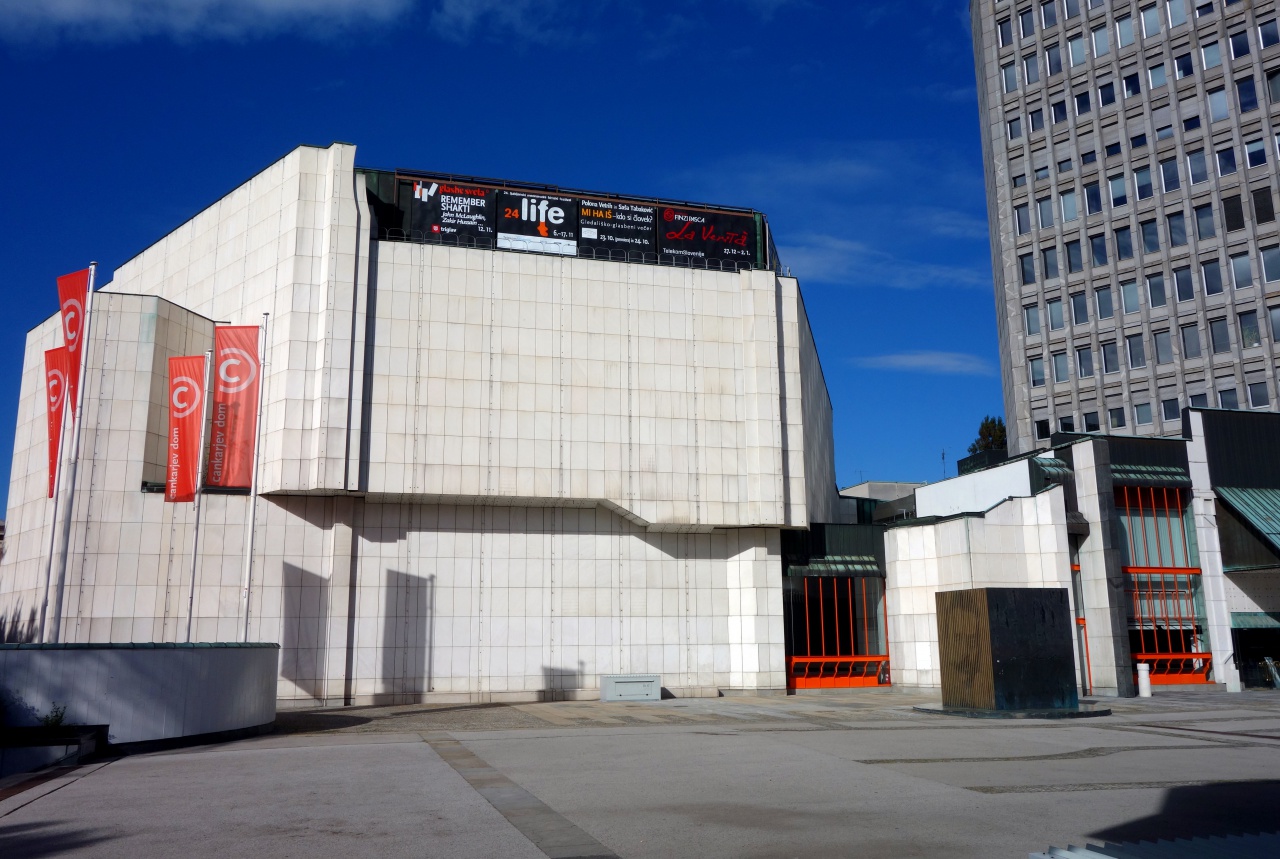
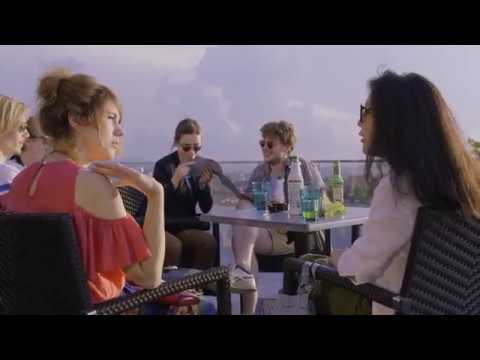
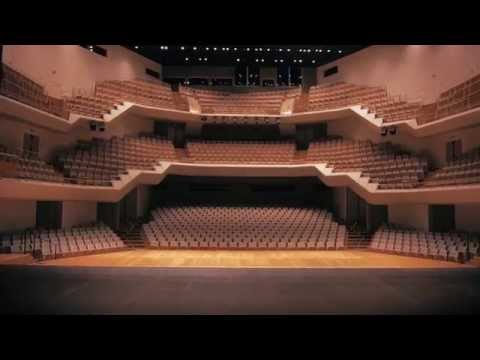
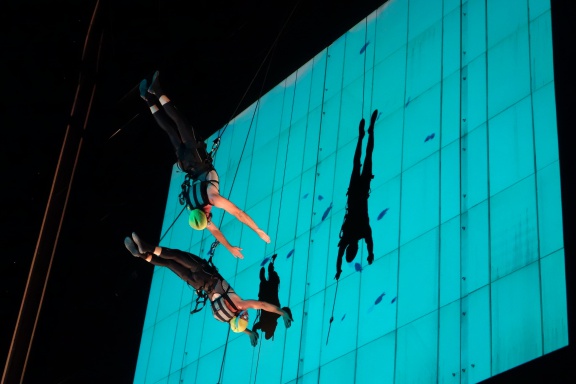
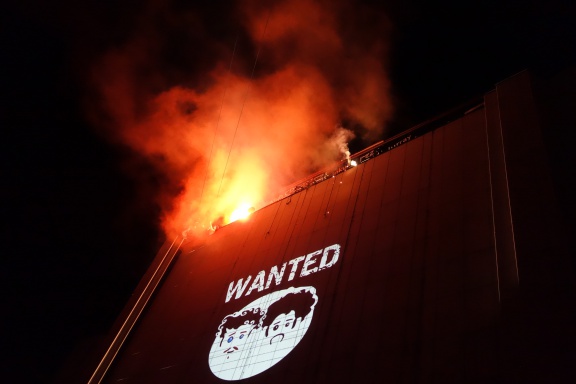
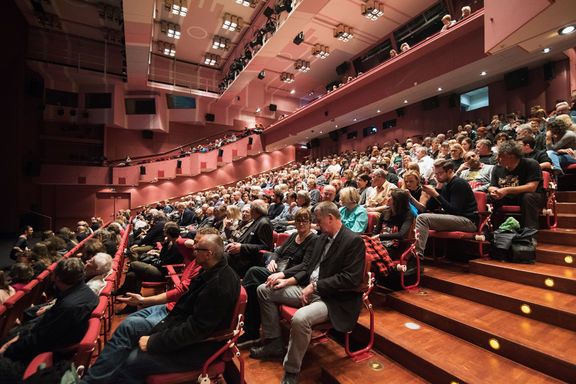
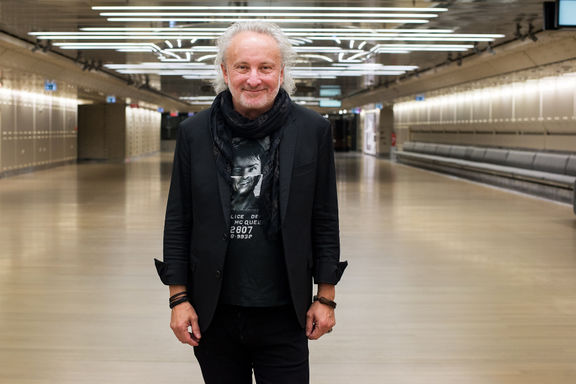
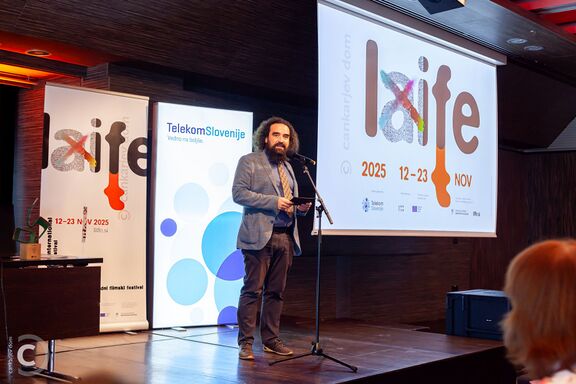
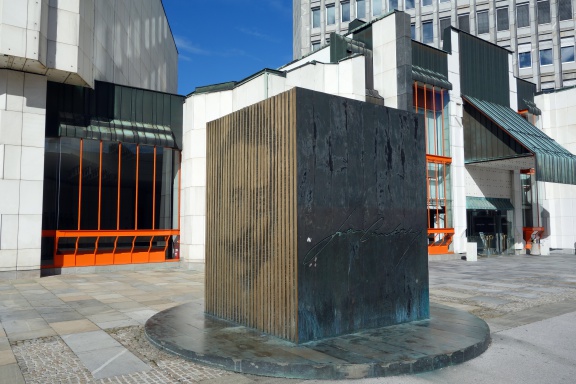
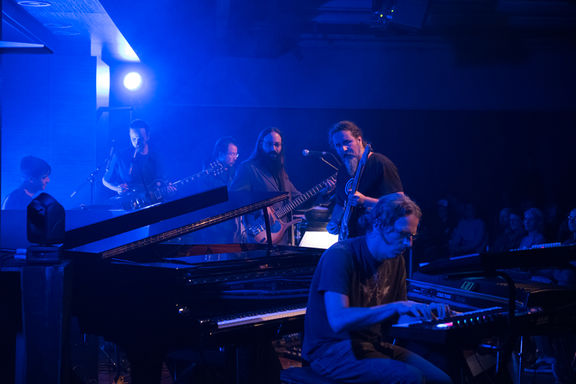
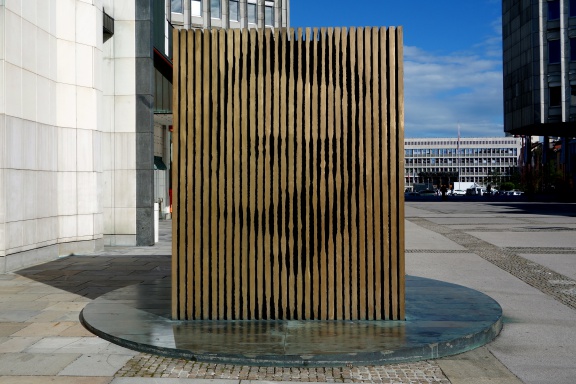
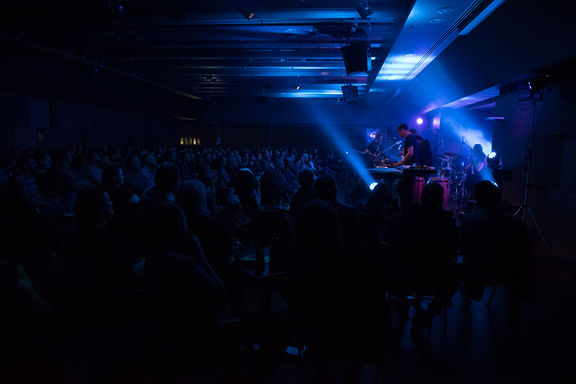
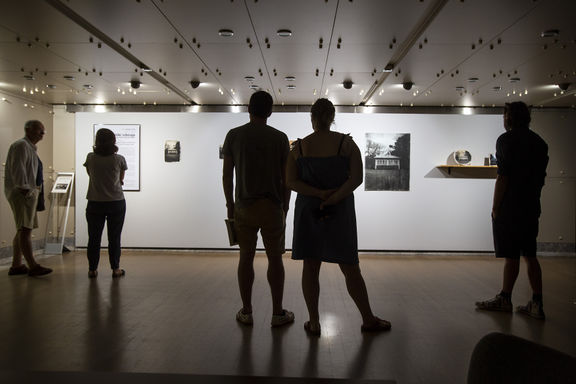
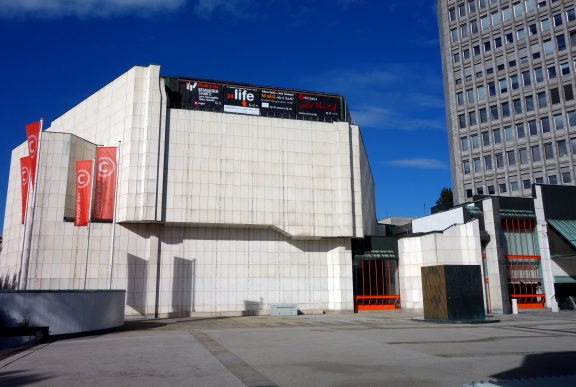
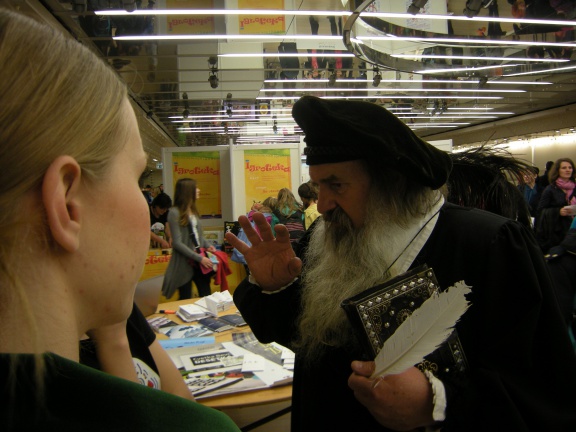
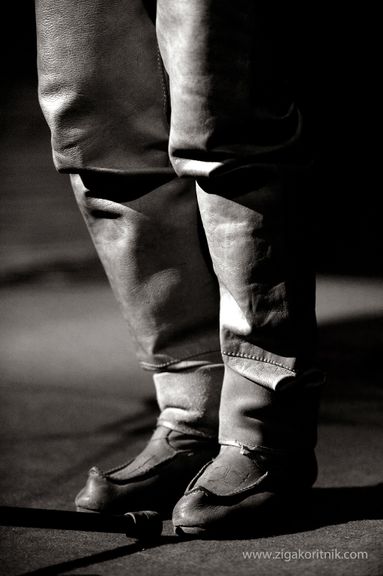
![Rdeča kapica: da te bolje vidim [Little Red Riding Hood: I see that this is better] performed at Cankarjev dom, choreographed by Matej Kejžar, produced by Emanat Institute 2007](/images/thumb/f/f1/Emanat_Institute_2007_Rdeca_kapica_da_te_bolje_vidim_Photo_Luka_Kase.JPG/384px-Emanat_Institute_2007_Rdeca_kapica_da_te_bolje_vidim_Photo_Luka_Kase.JPG)
